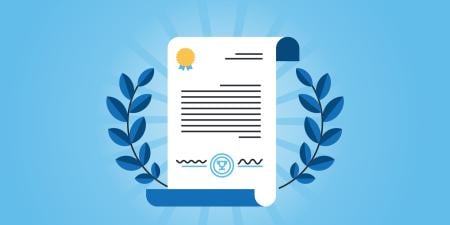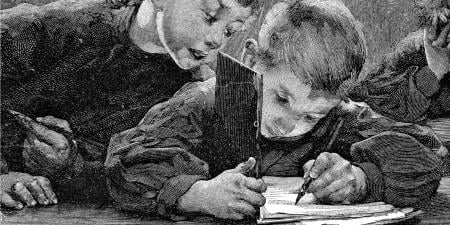Prior to matriculating at New York University School of Medicine (NYU), I worked in health care investment banking as a financial analyst at Credit Suisse First Boston. Although seemingly obvious in their differences, my experiences in these 2 worlds had close parallels. Both are largely client-oriented, the former caring for ill patients, the latter structuring acquisitions for biotechnology companies; both are also team-based and hierarchical. Professional medicine is composed of the medical student, house staff and attending physician, while the investment company consists of the financial analyst, vice president, and managing director. Perhaps the greatest similarity in my experience of the 2 situations was that, in both, I was the junior member of the team, learning while working, and growing into a professional.
Shortly after beginning my life as a medical student, however, I discovered 1 significant difference between my previous training as a banker and my future as a medical student and eventually a physician—the role of peer review in professional development. The financial services industry is a strong proponent of 360-degree peer evaluation. In practice, it is a top-down, bottom-up, side-to-side means of review. Informally, at the completion of every project members of my team would candidly critique each other's performance—strengths, weaknesses, areas that needed improvement, and suggestions on how to make those improvements. In addition to the project "post mortems," I participated in a semiannual, formal, comprehensive review process, in which my technical skills, job performance, and professionalism were assessed by every person with whom I worked, irrespective of their rank in the company. These reviews were critical in determining both promotions and financial compensation. After 3 years of working in the financial services industry, the idea of peer review became routine and even welcome.
Upon re-entering academia, I found medicine to be less welcoming of peer evaluation. The concept of house staff reviewing attending physicians, or junior house staff critiquing senior house staff, in an open setting, was foreign. The notion that medical students could review each other was equally odd. The medical profession, like investment banking, had been built upon the principle of the junior learning by working for the senior. Unlike the financial services industry, the medical profession currently lacks the culture and forum for peer assessment.
In an attempt to understand this disconnect, I inquired, first, of my immediate peers—my medical school classmates. The majority of students had entered medical education directly from undergraduate school, and the idea of giving their opinion on the performance or behavior of their peers initially seemed awkward and unnecessary to them. Moreover, many students expressed a lack of confidence in their ability to effectively assess and constructively articulate critiques of their colleagues' performance. Nevertheless, the need for peer review presented itself shortly after the start of my first year classes. The gross anatomy lab arbitrarily divided the class into groups of 6 students per cadaver. For most students, teamwork and cooperative learning occurred naturally. For a small minority of students, however, these behaviors were less easily adapted, and conflicts of personalities ensued. As a result, there was much talking and complaining outside of the classroom but there was never an established system that could effect change. Also missing from the evaluation process was the opportunity to recognize students who exceeded their responsibilities in facilitating the learning process for their peers. Positive feedback ended with a "thank you" among friends.
As I moved from the pre-clinical to clinical years, I found that peer review and feedback seemed increasingly more necessary. For example, medical students often visited patients together on the wards. Students had the opportunity to have their clinical skills, bedside manner, and interaction with patients observed by their classmates on a daily basis. Regular peer review would have taken full advantage of these unique opportunities and immediately focused students on their weaknesses. Peer assessment is also relevant in the relationship between medical students and residents. There is great variability among residents with respect to both teaching abilities and the emphasis placed on medical student education. These 2 factors contribute significantly to the quality of a student's experience on a particular rotation. It seems odd that, in light of the influence that residents have on medical students, a student's feedback is solicited only at the completion of a rotation through an anonymous electronic survey and the results are not communicated back to a resident until several months later.
When these and other ideas were recently discussed among members of the student body and faculty, it was agreed that peer review belonged in medical education. But reservations were expressed. Some students feared appearing disrespectful of their superiors as well as of their classmates. Other students questioned their ability to receive feedback and the extent to which they would be responsible for implementing the recommendations of their classmates. Out of these concerns, the idea of formally incorporating peer review into the medical school curriculum was proposed. It was thought that peer review skills, much like professionalism in general, could be learned and that, through instruction and practice, students could become proficient at peer evaluation.
Last year, through its Committee for Professional Development, NYU implemented its peer review initiative, focused initially on the entering class. The intended goals of the project were to educate students regarding the importance of peer review, provide them with the vocabulary to critique their colleagues' performances effectively, and work towards a cultural shift in which feedback from both superiors and juniors is expected and accepted. Through a series of workshops and small-group discussions, first-year students learned to identify strengths and weaknesses in their own professional behavior and that of their classmates. They were then challenged to articulate these points to one another, with the intended goal of cultivating personal and professional development from the bottom-up. By learning and practicing these skills in the pre-clinical years, students will have gained the experience and confidence to extend their application into the clinical years and beyond. (For more information about NYU's approach to peer review, see the medical education article.)
I often reflect on my life as a medical student and future as a physician in light of my previous experiences as an investment banker. Despite the paramount importance of professionalism in both, the manner in which it is cultivated is glaringly different, particularly with respect to the role of peer review. Although deeply rooted within the culture of investment banking, peer feedback has only recently been introduced into medical education. Despite the apparent delay to embrace these changes, medicine is an inherently dynamic profession. Old and accepted practices are challenged by new evidence, and new evidence is generated through new ideas. It is a natural extension of this innovative culture that the methods by which doctors are educated clinically and professionally should be re-evaluated. The incorporation of peer review into medical education is evidence of this philosophy, and its integration into medical practice will be the first step towards change.



